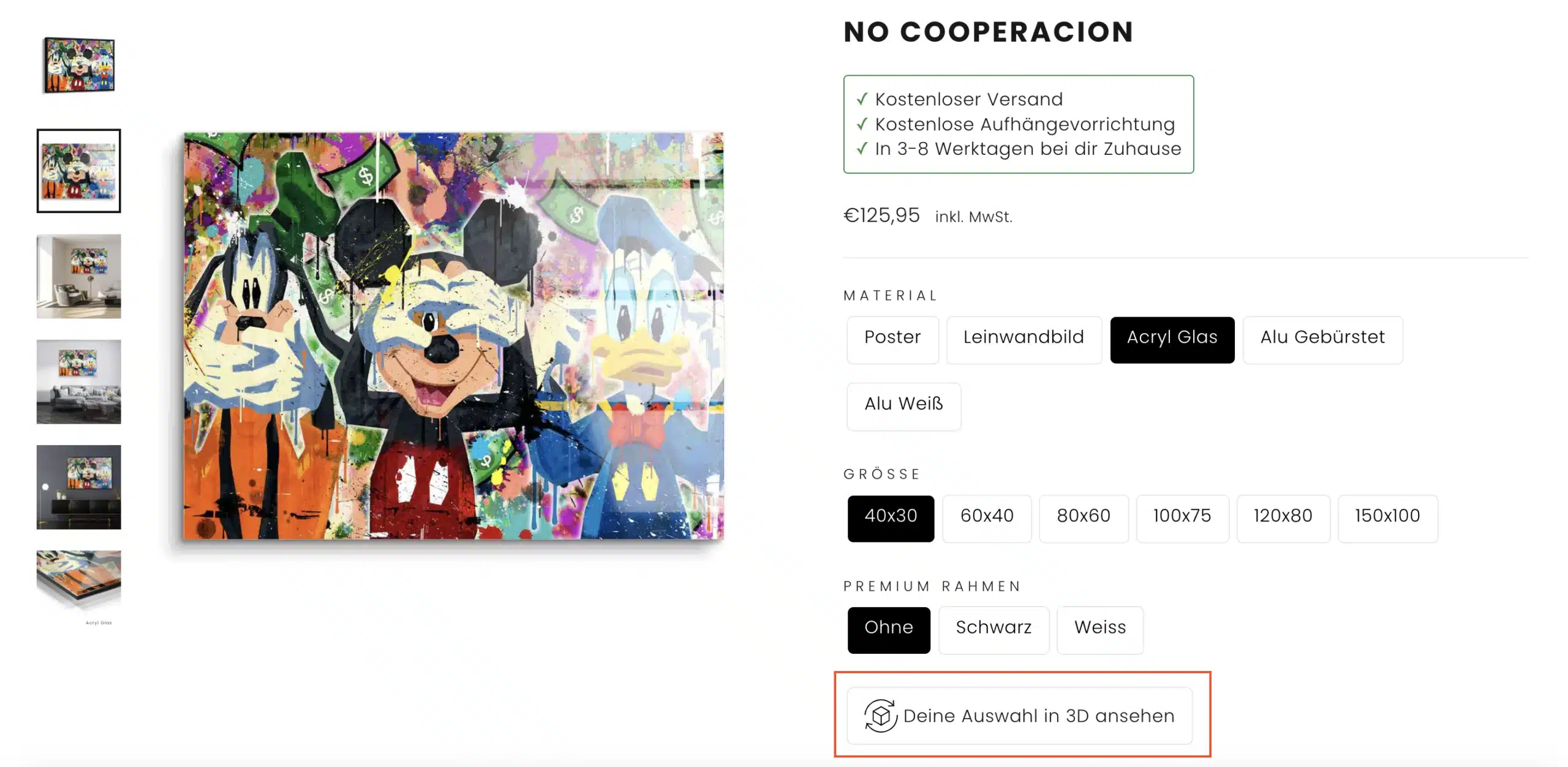
Augmented reality images
Virtual sample hanging of art - Art Mind Shop

„Augmented Reality entpuppte sich als klaren USP und Booster unserer Konversionsrate.“ – Tobias Düll, Geschäftsführer Art Mind Shop
Try out images in the right size and material virtually
Augmented reality (AR) has the potential to revolutionise the way we experience art by offering a new level of interactivity and immersion. In this case study, we will explore how AR was used at Art-Mind Shop and look at the potential benefits and challenges of this technology.
For many shoppers, buying pictures online involves a long decision-making process. You look at hundreds of products and try to estimate the actual size from photos and guess how the colours of the artwork will fit into the room.
Augmented reality for images provides a remedy here. Art and Canva can be displayed in 360° on the website using a 3D viewer to facilitate the purchase decision. Clicking on the “View in room” button starts the augmented reality experience.
The big advantage of the Mazing platform is that you can create AR for images in a scalable and cost-effective way. Thousands of artworks were no problem for Art Mind Shop.
Augmented reality is now being used more and more in the art industry. Our project with Boris Diamond also demonstrates the effectiveness of this technology.


24
67
100
AR for images is (still) a USP
Another example of AR in the art world is the “Pocket Gallery” app, which was developed by the National Gallery in London. This app allows users to view and interact with paintings from the National Gallery’s collection in a virtual gallery space. Using AR technology, users can see the paintings as if they were hanging in their own homes and can even take a virtual tour of the National Gallery in London.
The use of AR in the art world has several potential benefits. One advantage is that more people can experience art in an accessible and interactive way. Das Van Gogh Museum VR Experience ermöglicht es den Nutzern, das Museum bequem von zu Hause aus zu erkunden, und die Pocket Gallery App erlaubt es den Nutzern, Gemälde aus der Sammlung der National Gallery von jedem Ort der Welt aus zu betrachten und mit ihnen zu interagieren.
Overall, it is clear that AR has the potential to revolutionise the way we experience art by creating a new level of interactivity and immersion. Whilst there are some challenges to using this technology, the benefits of enabling more people to access and experience art in an accessible and interactive way are significant. As the technology develops, it will be interesting to see how AR is used in the art world in the future.

